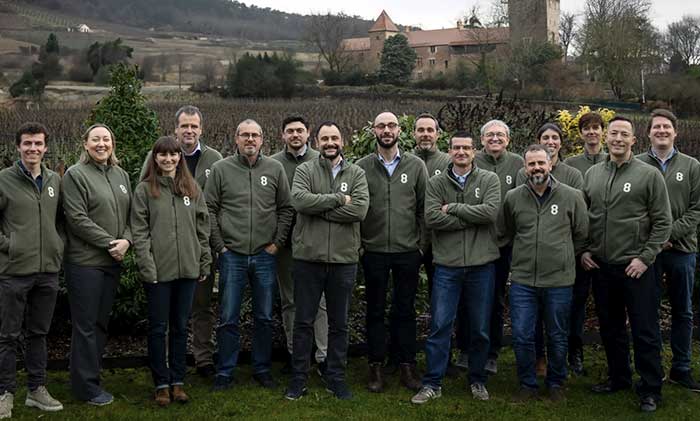
In a groundbreaking discovery, Mantle8, a leading energy exploration company, has confirmed the presence of record-breaking natural hydrogen concentrations in the Pyrenees region straddling the border between France and Spain. This finding has significant implications for the future of clean energy, as natural hydrogen—also known as “white hydrogen” or “gold hydrogen”—could emerge as a game-changing resource in the global transition away from fossil fuels.
The Pyrenees, a mountain range known for its complex geology, has long been suspected of harboring substantial hydrogen reserves. Mantle8’s latest data not only validates these suspicions but also suggests that the region could hold one of the highest concentrations of naturally occurring hydrogen ever recorded. This discovery could position Europe as a key player in the burgeoning hydrogen economy, reducing reliance on imported energy and accelerating decarbonization efforts.
The Significance of Natural Hydrogen
Unlike conventional hydrogen production methods—such as steam methane reforming (gray hydrogen) or electrolysis using renewable energy (green hydrogen)—natural hydrogen is generated through geological processes and requires no energy-intensive manufacturing. It is produced when water reacts with iron-rich minerals in the Earth’s crust, releasing hydrogen gas that can accumulate in underground reservoirs.
Key advantages of natural hydrogen include:
- Low carbon footprint – No CO₂ emissions during extraction (unlike gray hydrogen).
- Cost efficiency – Potentially cheaper than electrolysis-based hydrogen.
- Scalability – If large deposits are confirmed, it could meet global demand without the need for massive renewable energy infrastructure.
Given these benefits, the discovery in the Pyrenees could be a major step toward a sustainable hydrogen economy.
Mantle8’s Exploration and Findings
Mantle8, specializing in geological hydrogen exploration, has been conducting extensive surveys in the Pyrenees using advanced seismic imaging, gas sampling, and drilling techniques. Their latest measurements indicate unprecedented hydrogen seeps, with some sites showing concentrations exceeding 90% pure hydrogen—far higher than typical natural gas deposits, which usually contain only trace amounts of hydrogen.
Key Findings:
- High-Purity Reservoirs: Some zones contain nearly pure hydrogen, minimizing the need for costly separation processes.
- Continuous Seepage: Unlike finite fossil fuel reserves, natural hydrogen may be continuously generated by ongoing geological reactions.
- Structural Traps: The Pyrenees’ unique geology, with fractured rock formations and serpentinization reactions, creates ideal conditions for hydrogen accumulation.
These findings suggest that the Pyrenees could host a world-class hydrogen resource, comparable to recent discoveries in Mali, Australia, and the United States.
Implications for Europe’s Energy Future
Europe has been aggressively pursuing hydrogen as a cornerstone of its energy transition, with the European Hydrogen Strategy aiming for 40 GW of green hydrogen capacity by 2030. However, scaling up green hydrogen remains challenging due to high costs and the need for vast renewable energy inputs.
Natural hydrogen from the Pyrenees could complement these efforts by providing a readily available, low-cost alternative. Potential impacts include:
- Energy Security: Reducing dependence on imported natural gas and hydrogen.
- Economic Growth: Creating jobs in hydrogen extraction, processing, and distribution.
- Decarbonization: Enabling cleaner industrial processes, transportation, and power generation.
If commercially viable, Pyrenean hydrogen could supply France, Spain, and neighboring countries, supporting the EU’s goal of carbon neutrality by 2050.
Challenges and Next Steps
Despite the excitement, several hurdles remain:
- Extraction Technology: Unlike oil and gas, hydrogen extraction techniques are still in development.
- Infrastructure: Europe lacks dedicated hydrogen pipelines, requiring major investments.
- Regulatory Framework: Laws governing hydrogen mining are still evolving.
Mantle8 plans to conduct further exploratory drilling and collaborate with governments and energy companies to assess commercial viability. If successful, the Pyrenees could become a global hub for natural hydrogen production.
Conclusion
Mantle8’s confirmation of record hydrogen concentrations in the Pyrenees marks a pivotal moment in the clean energy transition. With its potential to provide abundant, low-cost, and carbon-neutral energy, natural hydrogen could revolutionize Europe’s energy landscape. While challenges remain, this discovery underscores the importance of geological hydrogen exploration as a key component of a sustainable future.
As research progresses, the Pyrenees may soon join the ranks of the world’s most significant energy regions—not for fossil fuels, but for the fuel of the future: hydrogen.
Citation

